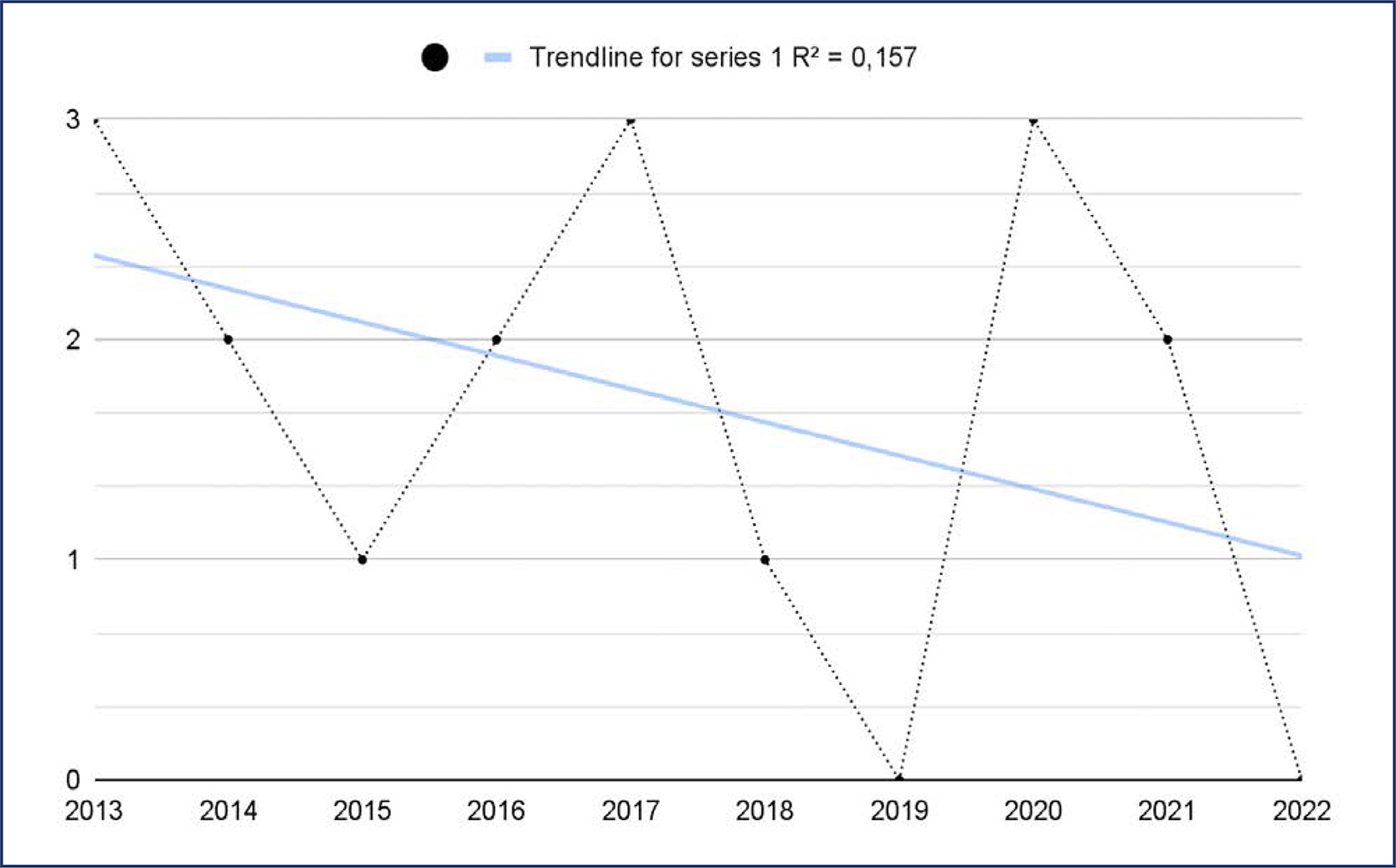Summary
Revista Brasileira de Ginecologia e Obstetrícia. 2024;46:e-rbgo50
To determine the relationship between early age at menarche, late age at menopause with specific subtypes of breast cancer (BC).
A literature search was conducted in Embase, Lilacs, PubMed, Scopus, and Scielo databases, following the Joanna Briggs Institute scoping review protocol and answering the question “How early age at menarche or late age at menopause are related to different breast cancer subtypes?”.
A number of 4,003 studies were identified, of which 17 were selected. Most of the included articles found a clear relationship between early menarche, late menopause and some subtypes of BC, mainly, PR+, ER+, luminal, and HER-2 tumors. However, some studies have found a contradictory relationship and one study didn’t find any relationship between them.
A relationship between early age at menarche and advanced age at menopause was observed with some subtypes of breast cancer, since other factors must be considered in its understanding.

Summary
Revista Brasileira de Ginecologia e Obstetrícia. 2015;37(2):82-86
DOI 10.1590/SO100-720320140005040
To analyze the risk factors for urinary incontinence (UI) in older women practicing physical exercises (PE).
A total of 152 older women with a mean age of 68.6±5.8 years who regularly practiced PE participated in the study. The presence of UI and gynecological, obstetric, clinical, behavioral, hereditary and anthropometric risk factors was determined identified. It was also applied the Domain 4 of the International Physical Activity Questionnaire (IPAQ) to determine the level of physical activity and body mass index and waist circumference were measured. Data were analyzed using descriptive and inferential statistics, with the level of significance set at 5%.
The prevalence of UI in the sample was 32.2%. Among the factors evaluated, only the use of diuretics (OR=2.7; 95%CI 1.0-7.0) and a positive family history of urinary incontinence (OR=2.3; 95%CI 1.1-4.8) were associated with UI symptoms.
The use of diuretics is considered to be a modifiable risk factor for UI, whereas a family history is not considered to be a modifiable risk factor.
Summary
Revista Brasileira de Ginecologia e Obstetrícia. 2014;36(7):310-314
DOI 10.1590/SO100-720320140005008
The objective of this study was to investigate the relationship between overactive bladder syndrome and anxiety in older women.
Of the 198 older women who were invited, 29 were excluded and 166 were then divided into two groups according to the Advanced Questionnaire of Overactive Bladder (OAB-V8): one group with overactive bladder symptoms (OAB-V8≥8) and the other without the symptoms of an overactive bladder (OAB-V8<8). The purpose was to conduct a frequency analysis and to investigate the relation of the social demographic data and anxiety in the two groups. The Beck Anxiety Inventory (BAI) was used to evaluate the level of anxiety. The Kolmogorov-Smirnov test was used to determine the distribution of the data. The differences between the two groups for the continuous variables were analyzed by the Mann-Whitney U test, the differences for the categorical variables were analyzed by the Chi-Square test and the association between the continuous variables was analyzed by the Spearman Correlation test. The tests were two-tailed with a confidence level of 5%.
Overall, the frequency of an overactive bladder was present in 117 (70.5%) of the participants. The body mass index (BMI) of the group with overactive bladder symptoms was significantly higher than the BMI of those without these symptoms (p=0.001). A higher prevalence of mild, moderate and severe anxiety was observed among older women with overactive bladder symptoms. In addition, the overactive bladder symptoms group presented a positive low correlation with anxiety symptoms (r=0.345) and with BMI (r=0.281). There was a small correlation between BMI and anxiety symptoms (r=0.164).
Overactive bladder syndrome was prevalent among older women and the existence of these symptoms was linked to the presence of mild, moderate and/or severe anxiety symptoms.
Summary
Revista Brasileira de Ginecologia e Obstetrícia. 2012;34(9):432-437
DOI 10.1590/S0100-72032012000900008
PURPOSE: To verify the coverage, by Pap testing, of older women and the associated factors. METHODS: A population-based study was conducted by home interviews. The inclusion criteria were women aged 60 and over, living on the north side of the city of Juiz de Fora, Minas Gerais, Brazil, self-sufficient to answer the questionnaire or having someone to answer on their behalf. The interview consisted of sociodemographic questions, regarding the general health of the older women, and preventive practices in women's health. The selection was made by random sampling, stratified and clustered in multiple stages. To analyze associated factors, a theoretical model was formulated with three hierarchical blocks of variables, adjusted to each other in each block. The variables that had a level of significance of 0.2 or less were included in the Poisson regression model and adjusted to their next highest level (p<0.1). RESULTS: Pap testing occurred in 84.1% of cases (95%CI 79.0-88.4). Based on multivariate regression analysis, three variables remained significantly associated with access to Pap testing: the marital status "without partner" (older women who were single, widowed, separated or divorced), self-sufficiency to perform Instrumental Activities of Daily Living (IADLs) and adherence to mammography. In the interblock analysis these variables remained significantly associated with the outcome variable, and self-sufficiency for IADLs had the highest association. CONCLUSIONS: Among the older women comprising the study sample, was observed variation in the use of Pap testing. An adjustment of public health policies towards the formulation of policies giving priority to universal preventive care may be an alternative to solve the disparities observed.